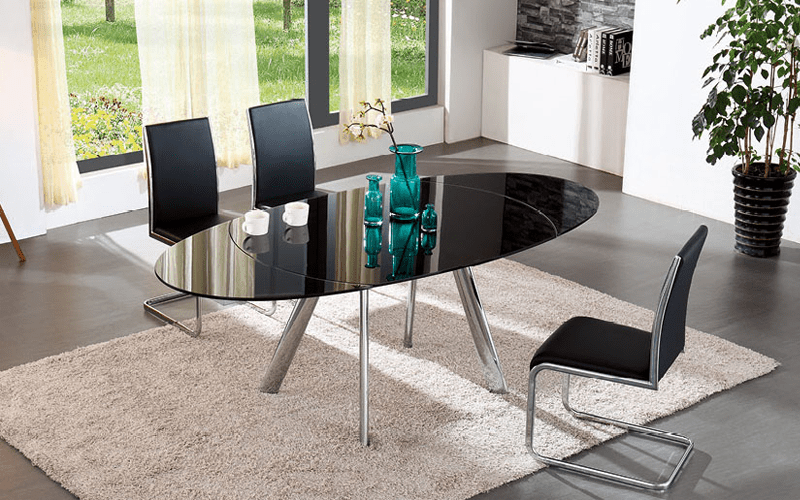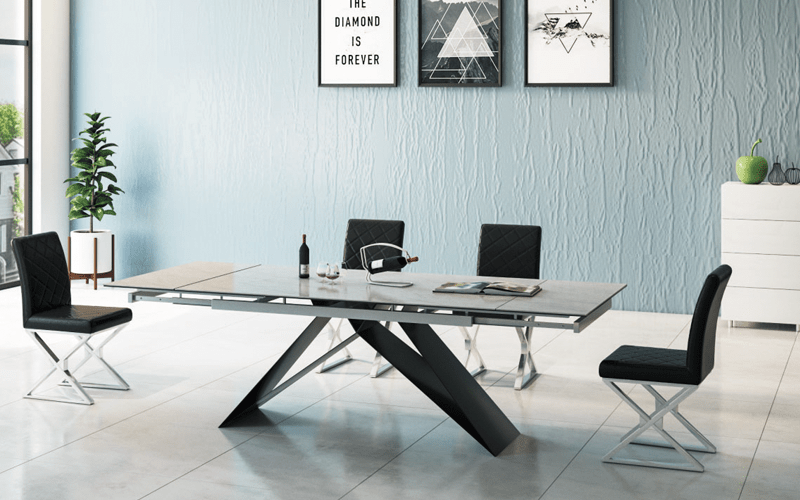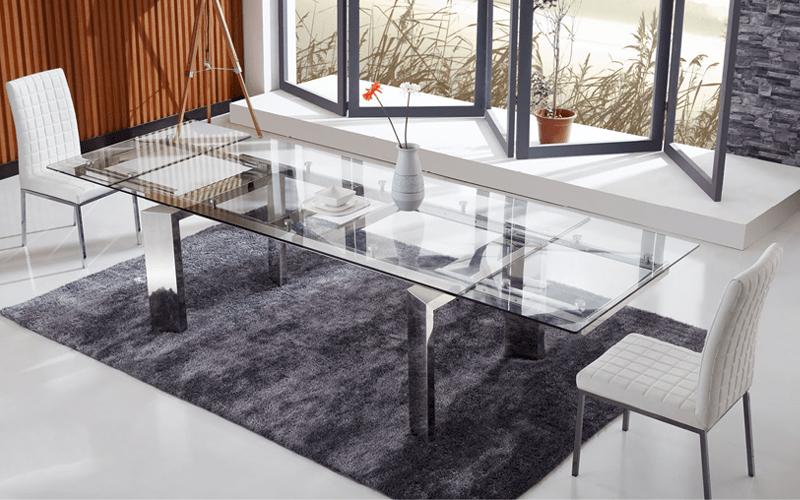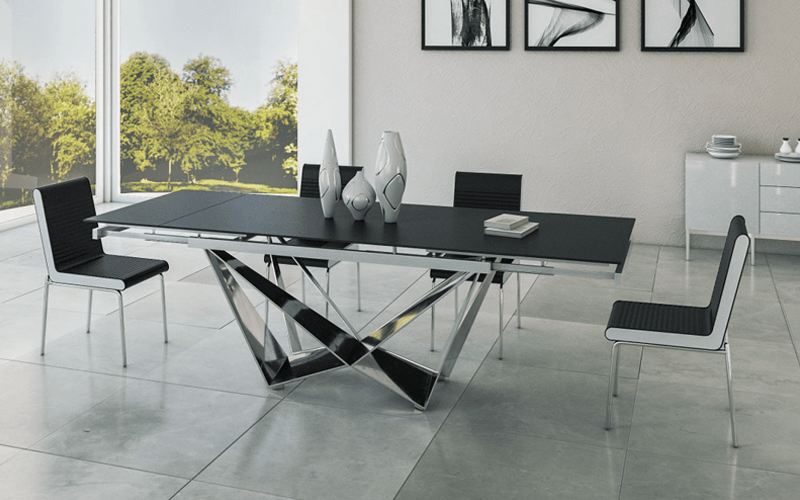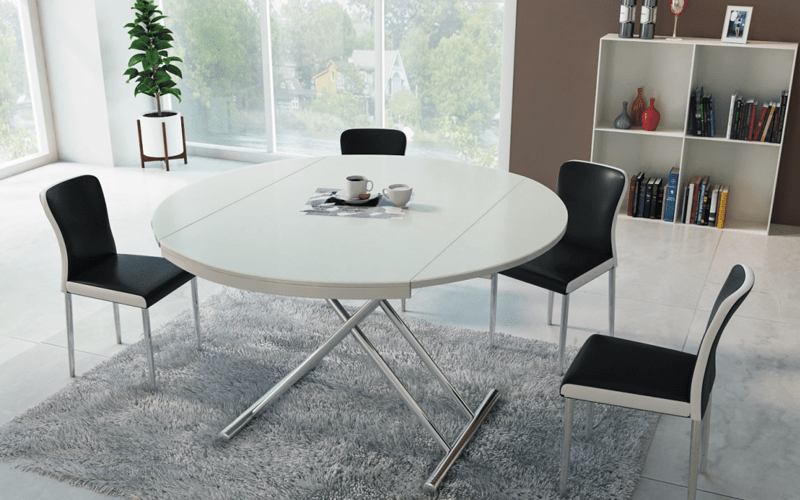Introduction:
The European furniture market has witnessed a surge in
demand for
extendable dining tables, reflecting a shift towards versatile and space-efficient living. As buyers
explore the myriad options available, understanding the types, dimensions, regional production
dynamics, and key procurement strategies becomes paramount. This comprehensive guide aims to delve
into the nuances of procuring extendable dining tables in China, providing a detailed roadmap for
both novices and experienced buyers.
Section 1: Exploring the Diversity of Extendable Dining Tables
1.1 Classification by Extension Mechanism:
Extendable dining tables come in various designs based on the extension mechanism:
Middle Extension: Ideal for seamlessly expanding the table's length. The mechanism allows for a
smooth and centralized extension, providing additional space for diners.
Dual-sided Extension: Offers flexibility with extensions on both sides. This design accommodates
varying seating arrangements, making it versatile for different occasions.
Single-sided Extension: A space-saving design with an extension on one side. Space-conscious
individuals may opt for the single-sided extension design. This innovative approach saves space
while maintaining the convenience of additional table length on one side.
Rotating Extension: Allows for dynamic table configurations. This style allows users to transform
the table layout, catering to changing needs and enhancing the dining experience.
1.2 Material Differentiation:
Extendable tables exhibit diversity in materials. The material selection for extendable dining
tables plays a crucial role in defining their aesthetics, durability, and suitability for different
settings:
Wood Extendable Tables: A classic choice with warmth and durability. It lends a traditional and
inviting feel, making it suitable for various interior styles.
Ceramic Surface Extendable Tables: Known for their elegant and easy-to-clean surfaces. Ceramic
extendable tables offer a sophisticated dining experience. The smooth and resilient ceramic material
adds a touch of luxury to the setting.
Glass Extendable Tables: For those with a preference for modern and sleek designs, glass extendable
tables are an excellent choice. The transparent surface creates an illusion of space, making them
ideal for contemporary and minimalist spaces.
Varied Leg Materials: Legs contribute significantly to the table's overall design and stability.
Options such as solid wood, iron, fiberglass, and more provide diverse choices for customers to
match their tables with existing furniture or create a unique, personalized look. The choice of leg
material can also influence the table's weight, ease of movement, and overall aesthetic appeal.
Section 2: Understanding Standard Dimensions
2.1 Standard Size Ranges:
Extendable dining tables come in various standard dimensions, catering to diverse preferences and
spatial requirements. Common sizes, prevalent in the European market but not limited to, include:
130-190CM
130-200CM
160-240CM
180-260CM
200-300CM
These standard sizes provide flexibility in accommodating different numbers of diners and adapting
to various room sizes.
2.2 Customization Options:
The beauty of extendable dining tables lies in their adaptability to individual needs. Customization
options enable buyers to tailor tables to specific dimensions, ensuring a perfect fit for their
dining spaces. This personalized approach allows for:
Meeting specific dining capacity requirements.
Adapting to the layout and size of diverse living environments.
Creating a bespoke piece that complements the overall interior design.
This customization flexibility ensures that extendable dining tables can seamlessly integrate into
any setting, offering both functionality and aesthetic harmony.
Section 3: Regional Dynamics of Production in China
China's diverse production landscape significantly influences the characteristics and offerings of
extendable dining tables. Understanding the regional dynamics is crucial for buyers seeking specific
attributes in their procurement.
3.1 Northern Market (Hebei):
The Northern region, particularly Hebei, is a hub for mass production, emphasizing cost-efficiency.
Manufacturers in this area often focus on large-scale production to meet high demand while keeping
costs competitive. Buyers looking for budget-friendly options and high quantities may find the
Northern market particularly appealing.
3.2 Southern Market (Guangdong):
In contrast, the Southern market, centered around Guangdong, sets itself apart with a distinct focus
on quality and design innovation. Manufacturers in this region prioritize:
High-quality Craftsmanship: Southern producers are known for their meticulous attention to detail,
ensuring that each piece meets stringent quality standards.
Unique Designs: Innovation and creativity thrive in the South, resulting in furniture pieces that
stand out in terms of aesthetics and functionality.
Small-batch Deliveries: The emphasis on craftsmanship often translates into smaller production
batches, allowing for more intricate detailing and customization.
Integrated Dispatch with Other Furniture Products: Many Southern manufacturers offer integrated
dispatch services, facilitating the delivery of a range of furniture products to streamline
procurement for buyers.
Buyers seeking a balance between quality, design innovation, and smaller quantities may find the
Southern market a fitting choice for sourcing extendable dining tables. Understanding the strengths
of each region allows buyers to align their procurement strategies with their specific preferences
and requirements.
Section 4: Strategic Procurement Approaches
Effective procurement of extendable dining tables in China requires a strategic approach, taking
into account material preferences, business scale, and the strengths of different regions.
4.1 Identifying Material Preferences:
Start by determining the primary structural material for the extendable dining tables, whether it be
iron, ceramic, wood, or another material. Understanding material preferences is crucial, as it
guides the selection of production bases. For example, if iron and ceramic are the preferred
materials, considering the concentration of their production bases (iron in the North, ceramic in
the South) becomes essential.
4.2 Assessing Purpose and Business Scale:
Tailor your procurement strategy to align with your business's purpose and scale.
For personal use or small-scale operations with specific style preferences and lower quantities, the
Southern market, with its emphasis on craftsmanship and design innovation, may be a suitable
choice.
In contrast, for large-scale procurement where simpler craftsmanship is acceptable, the
cost-efficient mass production capabilities of the Northern market could be advantageous.
Understanding your business's purpose and scale ensures that the chosen procurement strategy aligns
with your specific needs.
4.3 Leveraging Online Platforms and Exhibitions:
Harness the power of digital platforms and industry exhibitions to streamline the procurement
process.
Identify Potential Suppliers: Explore online platforms and attend trade shows to discover a wide
array of potential suppliers, each with its unique offerings.
Request Samples: Seek samples from shortlisted suppliers to evaluate the quality and design of their
extendable dining tables firsthand.
Commission Third-Party Factory Audits: Ensure the credibility and reliability of suppliers by
commissioning third-party factory audits. This step is vital to guarantee that the chosen
manufacturers meet the required standards.
Establish Partnerships through Evaluation and Negotiations: Once satisfied with the samples and
factory audits, engage in thorough evaluations and negotiations to establish mutually beneficial
partnerships.
By following these strategic approaches, buyers can navigate the complexities of the Chinese market,
make informed decisions, and secure reliable suppliers for their extendable dining table needs.
Conclusion:
Navigating the complex landscape of sourcing extendable
dining tables in China demands a strategic approach, considering material preferences, intended use,
and business scale. By comprehensively understanding the production dynamics and following
meticulous procurement strategies, buyers can forge successful partnerships, ensuring a seamless and
efficient supply chain for these in-demand and versatile furnishings.
